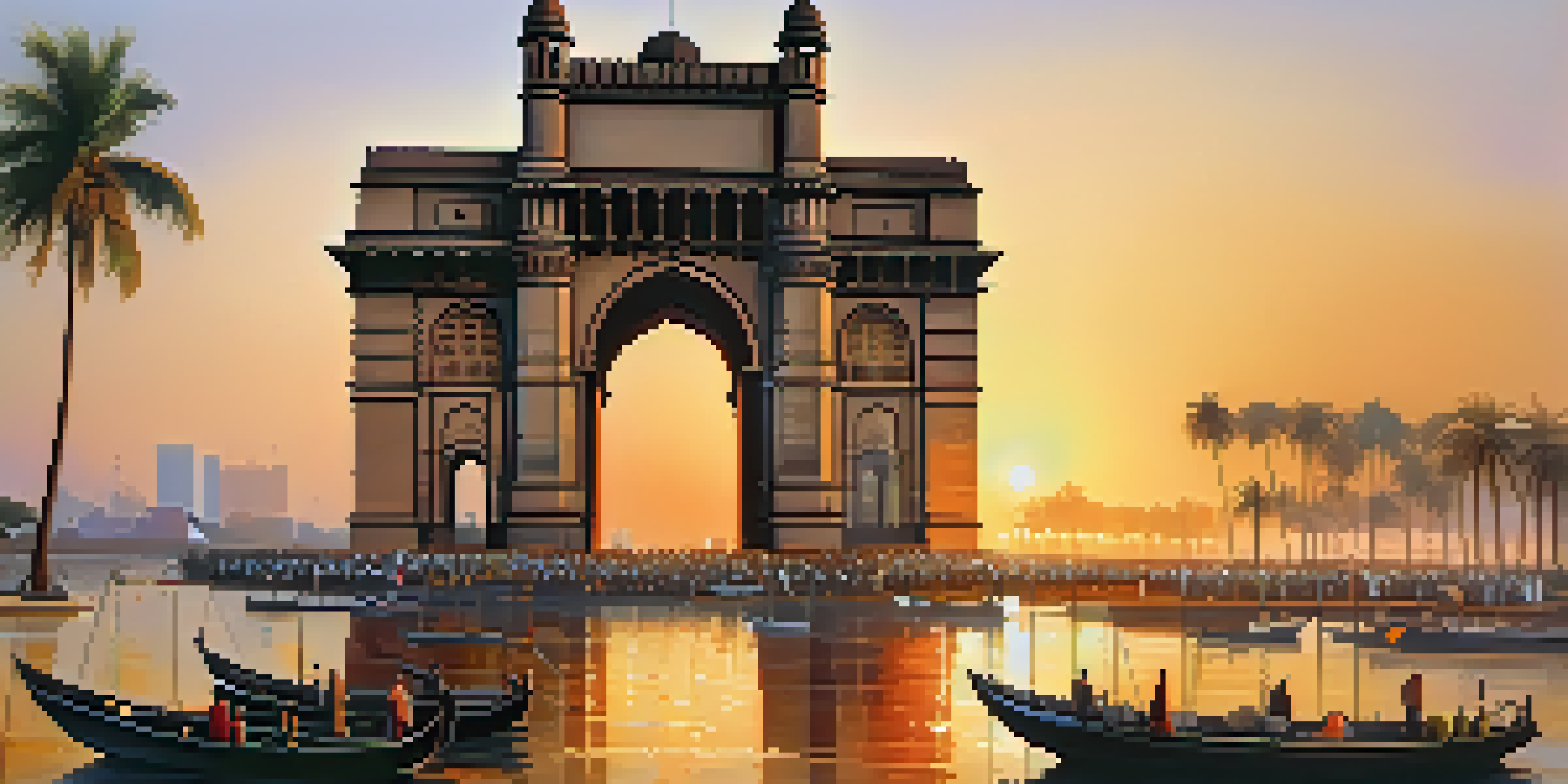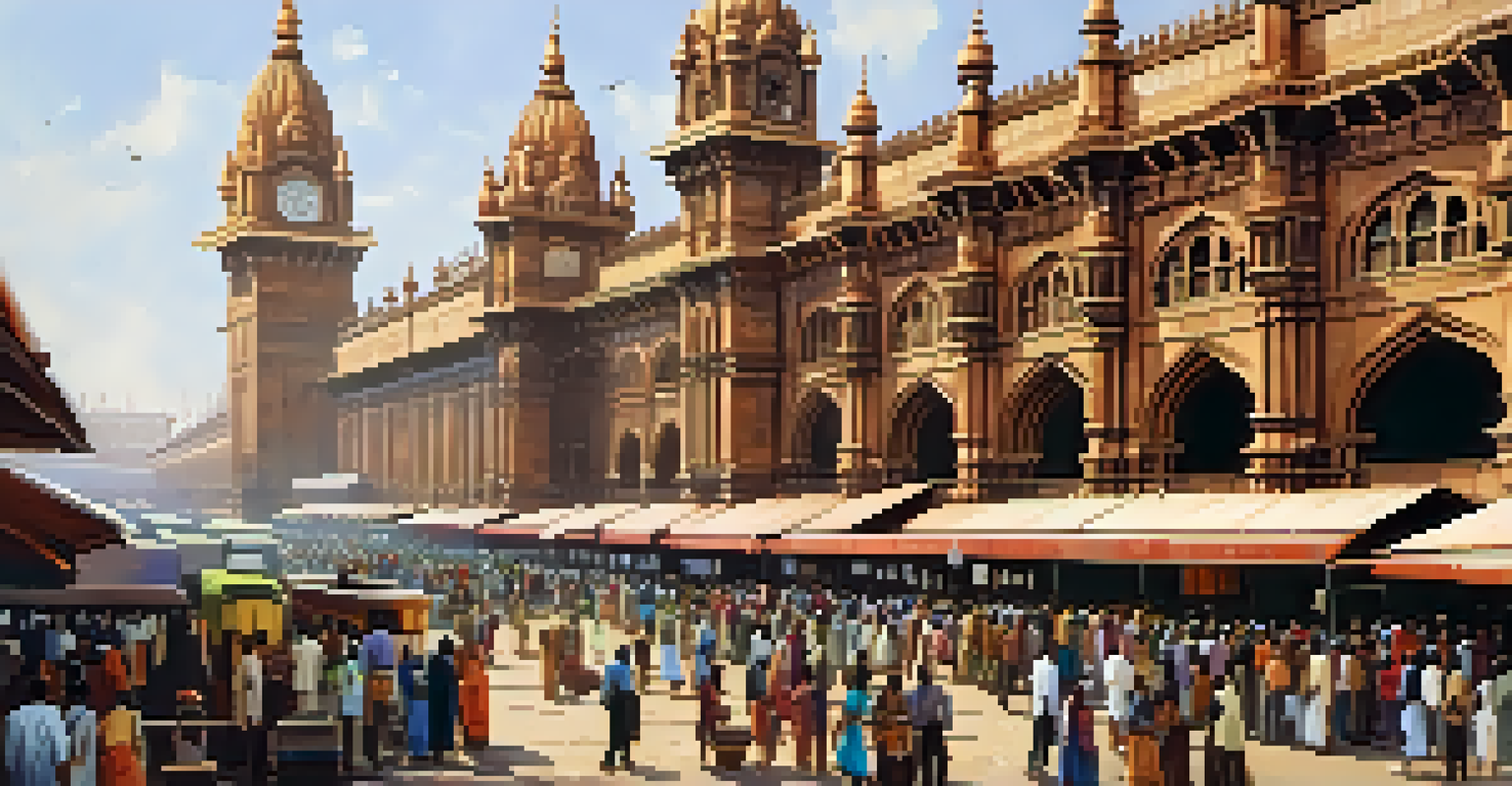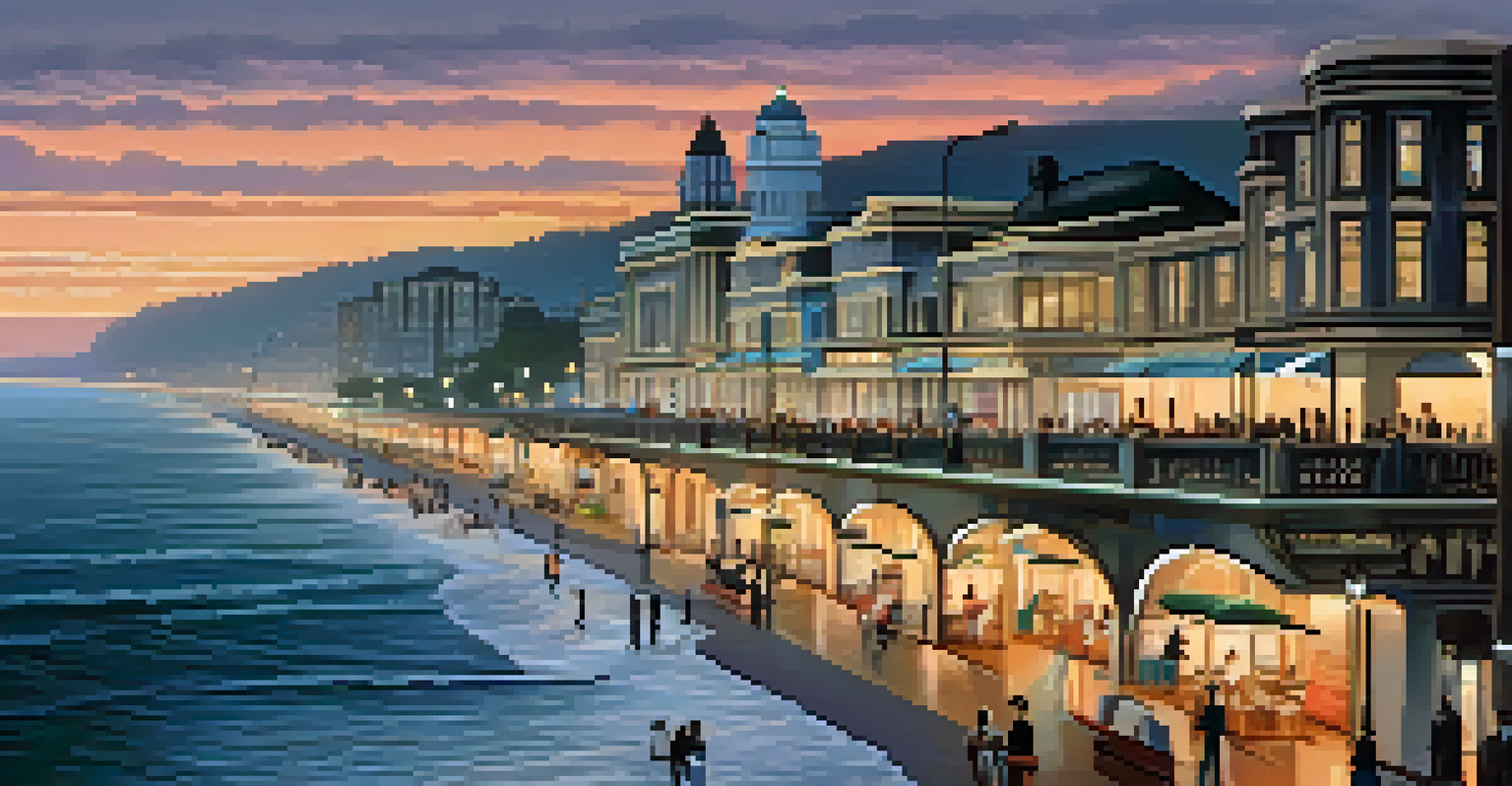Walking Through the Colonial Era: Mumbai's Historical Trails

Introduction to Mumbai's Colonial Legacy
Mumbai, formerly known as Bombay, is a vibrant city that boasts a rich colonial history. This era has left an indelible mark on the city’s architecture, culture, and urban planning. Walking through its historical trails offers a unique glimpse into the past, revealing stories that shaped modern Mumbai.
The past is never dead. It's not even past.
As you stroll through its streets, you’ll encounter an eclectic mix of colonial buildings, each narrating tales of the British Raj and the city's evolution. From grand structures to hidden gems, these trails are not just about sightseeing—they're about experiencing the essence of Mumbai's heritage.
Whether you're a history buff or a curious traveler, these trails provide an engaging way to connect with the city's roots. Let's lace up our walking shoes and embark on this journey through time!
The Gateway of India: A Majestic Starting Point
No exploration of Mumbai’s colonial trails would be complete without a visit to the iconic Gateway of India. Built in 1924 to commemorate the visit of King George V and Queen Mary, this monumental archway stands as a symbol of the city’s colonial past. The view of the Arabian Sea from here is simply breathtaking, making it a perfect starting point for your historical walk.

Surrounding the Gateway, you'll find a blend of bustling markets and serene waterfronts. This contrast highlights the vibrant life of Mumbai while echoing its colonial history. Take a moment to appreciate the Indo-Saracenic architecture that characterizes this landmark—it's a beautiful fusion of different styles!
Mumbai's Colonial Heritage Explored
The city's colonial history is vividly reflected in its architecture, culture, and urban planning, offering a unique exploration of its past.
As you soak in the atmosphere, consider the stories of the countless travelers who have passed through this gateway. It is not just a structure; it represents the intersection of history and modernity, inviting you to delve deeper into Mumbai’s colonial narrative.
Chhatrapati Shivaji Maharaj Terminus: A Train Station with Character
Next on our journey is the Chhatrapati Shivaji Maharaj Terminus, a UNESCO World Heritage Site that epitomizes Victorian Gothic Revival architecture. This bustling train station, formerly known as Victoria Terminus, showcases intricate carvings, towering spires, and stunning stained glass windows. It’s a perfect example of how colonial influence has shaped the city’s infrastructure.
History is not a burden on the memory but an illumination of the soul.
As trains come and go, you’ll notice the vibrant life within and around the station. Vendors selling snacks, commuters rushing to catch their trains, and tourists marveling at the architecture create a lively atmosphere. It’s fascinating to think that this station has been a pivotal part of Mumbai's transit system since the late 19th century.
Taking a moment to appreciate the details of the building can transport you back to a time when Mumbai was a burgeoning metropolis. The Terminus is not just a transit point; it’s a historical landmark that tells the story of Mumbai’s growth and resilience.
Marine Drive: The Crescent of History and Modernity
As we continue our walk, Marine Drive beckons with its stunning coastal views and art deco buildings. Often referred to as the 'Queen's Necklace' due to its shimmering streetlights at night, this promenade reflects both colonial charm and contemporary Mumbai lifestyle. Walking along this stretch is a perfect way to unwind while soaking in the city's history.
The architecture along Marine Drive showcases the influence of the Art Deco movement during the colonial era, with buildings that exude elegance and style. Each structure has a story to tell, from housing prominent figures to serving as backdrops for Bollywood films. This blend of history and modernity creates a unique ambiance that is quintessentially Mumbai.
Key Historical Landmarks to Visit
Visiting iconic sites like the Gateway of India and Chhatrapati Shivaji Maharaj Terminus highlights the blend of colonial charm and modern life in Mumbai.
As you walk, don’t forget to take a moment to enjoy the sea breeze and watch the waves crash against the shore. This serene environment contrasts beautifully with the bustling city, reminding us of the diverse narratives that coexist in Mumbai.
Kala Ghoda: The Artsy Heart of Colonial Mumbai
Continuing our journey, we arrive at Kala Ghoda, an area known for its vibrant arts and culture scene. This neighborhood is home to several art galleries, museums, and cultural institutions that celebrate Mumbai's colonial heritage and contemporary creativity. It’s an area where history and art beautifully intertwine.
With its charming streets and colonial buildings, Kala Ghoda invites you to explore its artistic offerings. From the Jehangir Art Gallery to the National Gallery of Modern Art, there’s plenty to see and experience. Walking through this area feels like stepping into a living museum, where every corner reveals a piece of history.
As you wander, take a moment to appreciate the street art and installations that add a modern twist to the historical backdrop. Kala Ghoda represents the spirit of Mumbai—dynamic, creative, and rooted in its rich past.
Fort Area: A Glimpse into Colonial Governance
Next, we venture into the Fort Area, which was once the center of British governance in Mumbai. Here, you can find impressive structures like the Bombay High Court and the Asiatic Society of Mumbai. These buildings not only showcase stunning architecture but also highlight the city’s colonial administrative history.
Walking through the Fort Area, you’ll notice a mix of bustling offices and quaint cafes nestled between historic buildings. This juxtaposition speaks volumes about Mumbai’s evolution over the years. It’s a space where the past and present coexist, allowing you to appreciate the city’s rich narrative.
Cultural Significance of Colonial Trails
Exploring Mumbai's colonial trails not only educates about its historical context but also enriches the experience of both locals and visitors.
As you stroll, take a moment to reflect on the decisions and events that took place within these walls. The Fort Area holds countless stories of governance, law, and order that have shaped the city into what it is today.
St. Thomas Cathedral: A Spiritual Colonial Landmark
Our historical journey brings us to St. Thomas Cathedral, one of the oldest churches in Mumbai. Built in the 18th century, this cathedral is a remarkable representation of colonial architecture. Its serene ambiance provides a peaceful contrast to the lively streets outside, inviting visitors to pause and reflect.
Inside, the cathedral is adorned with intricate stained glass windows and memorials dedicated to notable figures from Mumbai's history. Each element within the church tells a story, connecting visitors to the past. It’s a fascinating spot to learn about the religious influences that have shaped the city over the centuries.

As you explore the cathedral grounds, consider the role spirituality has played in Mumbai's diverse culture. St. Thomas Cathedral is not just a place of worship; it is a testament to the city’s colonial legacy and its ongoing journey of growth and acceptance.
Conclusion: Embracing Mumbai's Colonial Trails
As our walk concludes, it’s clear that Mumbai's colonial trails offer a treasure trove of history and culture. From grand monuments to quiet streets, each stop along the way reveals a piece of the city’s layered past. These trails encourage us to appreciate the beauty of Mumbai's diversity and the stories that have shaped its identity.
Walking through these historical sites not only educates us about the colonial era but also allows us to connect with the present. It’s a reminder that every city has its narratives, and understanding them enriches our experience as travelers and residents.
So, whether you’re a local or a visitor, take the time to explore Mumbai's colonial trails. Each step you take brings you closer to understanding the city’s rich heritage and the vibrant tapestry of life that continues to unfold here.